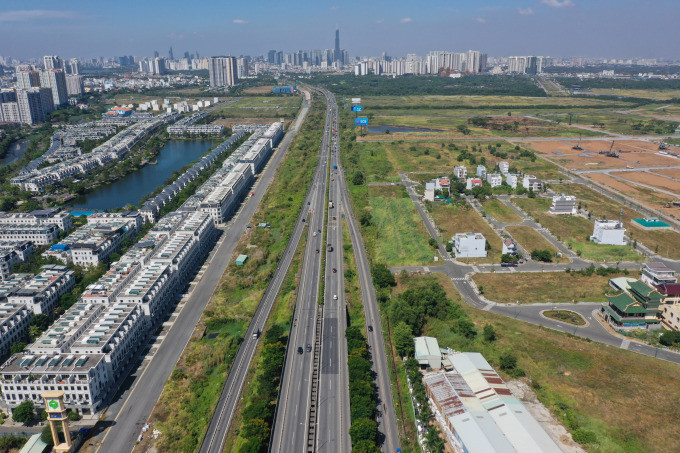According to experts, the move to tighten land subdivision will have a major impact on the short-term market as 90% of the supply in this segment comes from individuals who freely subdivide plots.
The Law on Real Estate Business (amended) was passed on November 28 (effective from January 1, 2025), stipulating that land use rights cannot be transferred to individuals who build houses themselves or divide plots of land for sale in wards, districts, and cities of special-class, class I, II, and III urban areas.
Currently, the country has 902 urban areas, including 2 special urban areas (Ho Chi Minh City and Hanoi), 22 type I urban areas (cities under the central government), 35 type II urban areas (cities under provinces, cities under centrally run cities), 46 type III urban areas (towns under provinces), 94 type IV urban areas (towns under districts). Accordingly, except for urban areas not on the prescribed list, all must establish projects and apply for approval according to local planning, in order to end the spontaneous buying and selling of land plots in recent years.
The current law only prevents the subdivision and sale of land in wards of special-class urban areas and class I urban areas directly under the Central Government; areas with high requirements for landscape architecture, central areas and around works that are architectural highlights in urban areas; frontages of regional-level roads and above and main landscape roads in urban areas.

Real estate in the East of Ho Chi Minh City with apartment projects, townhouses, land plots, February 2022
The new regulation is closely evaluated by experts and will change the "game" of the entire real estate market, especially the land segment in 105 cities and towns across the country (places that were not previously tightened).
Mr. Le Hoang Chau, Chairman of the Ho Chi Minh City Real Estate Association (HoREA), commented that the 2003 Land Law had a provision prohibiting the subdivision and sale of land plots in urban areas and developing urban planning but allowing the subdivision and sale of land plots in towns and rural areas. The 2013 Land Law allowed the subdivision and sale of land plots right in the central area. This, in addition to removing difficulties for the real estate market in the 2008-2013 period, also led to many shortcomings. Not only did it increase the situation of taking advantage of the widespread subdivision and transforming it into residential land, but it also disrupted urban development planning, causing waste of land resources and creating a situation of real estate speculation.
"Tightening land division and separation may reduce land trading activities in the short term, and the price of existing land may be pushed up... but in the long term, it will help this market develop in a transparent and sustainable direction, preventing speculation, land fever, and waste of land assets that have been going on for many years," Mr. Chau commented.
Sharing the same view, Mr. Dinh Minh Tuan, Director of Batdongsan in the Southern region, acknowledged that in the early stages, the land market could "shake". Because 90% of land transactions in the market today come from free subdivision products of individuals, small real estate companies develop the model of self-divided land. Normally, an individual applying for subdivision or separation of land has much easier procedures than a business setting up a project or applying for a license. Therefore, up to now, land traders still prefer the form of free trading, rarely setting up formal projects. Buyers also like self-divided land because the prices are diverse, easy to buy and easy to sell.
"Once the subdivision is tightened, this type of self-divided land will run out of space. The supply in the market will be less diverse and narrowed, and customers buying and selling land will also decrease somewhat because it is not easy to access and find products like before," Mr. Tuan shared.
He predicts that in the near future, the land market may see a large number of large-area land products for sale at "discounted prices", coming from investors who have bought land with the purpose of dividing and subdividing the land to make a profit. Once "stuck" with this product, the landowner will have to accept a loss to quickly liquidate it. But selling is not easy because the land bought in subdivided lots is often large in area, high in value, has a limited customer base and knows how to "squeeze the price".
According to Mr. Ta Trung Kien, Director of Wowhome Real Estate Company, the regulation on tightening subdivision of the Housing Law 2023 is a drastic and positive measure to bring healthy development to the real estate market. However, he said that the new Law will also have a significant impact on many individuals who need to subdivide plots for non-business purposes.
In addition, the new regulations will make the supply and demand for land less diverse. If in the past, anyone with any financial ability could buy land, and there were many customers in this segment, things will be very different in the future. Mr. Kien believes that in the long run, land is no longer an "easy" playground for many people. This market will demand more from both sellers and buyers. Land investors must learn to comply with the new rules of the game to adapt and survive.
According to VnExpress